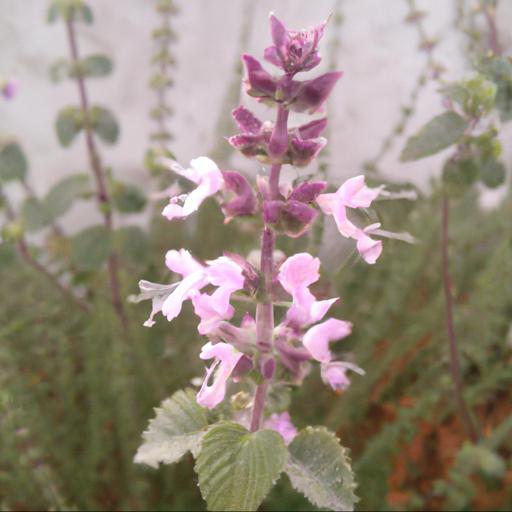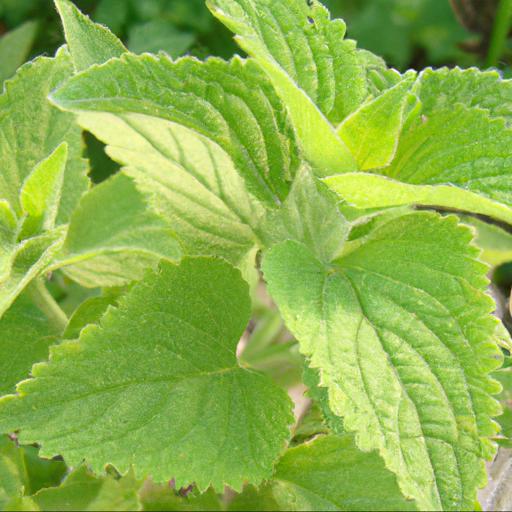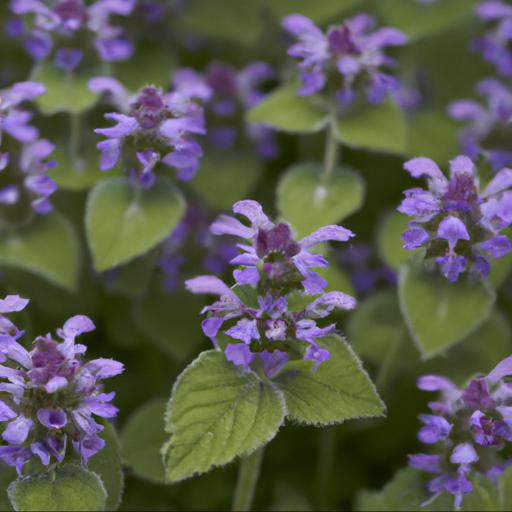Plant families are an essential part of our ecosystem, and the Lamiaceae family is no exception. This family is one of the largest and most diverse in the world, with over 7,000 species of plants that are native to many parts of the world.
This family includes herbs, shrubs, trees, and vines, and is known for its fragrant flowers and aromatic leaves. Lamiaceae plants are also known for their medicinal properties, as many of them are used in traditional medicines to treat a variety of ailments. In this blog, we will explore the different types of plants in the Lamiaceae family, as well as their unique characteristics and uses.
Characteristics of the lamiaceae plant family

. The Lamiaceae, commonly known as the mint family, is a large family of plants with more than 200 genera and 7,500 species. This family includes fragrant herbs and shrubs that are found throughout the world, including in the UK.
Cultural, medicinal, and culinary uses of these plants have been documented from ancient times to the present. The main characteristics of Lamiaceae plants are the presence of four-sided stems, meaning the square cross-section from which the family gets its nickname ‘the square- stemed’.
The leaves of this family are opposite, meaning two leaves per node on the stem, and are usually simple and heavily scented, although some are lobed or toothed. Flowers of mint family plants tend to have five petals with two lips, upper and lower, on each one.
Some plants of this family may have showy, or ornamental, floral arrangements, while others may have less showy blooms. In the UK, Mint family plants are often used in gardens to add fragrance and attract beneficial insects. Examples of popular Lamiaceae plants in the UK include lavender, rosemary, and thyme, which are grown for their scent and for use in cooking, and scented-leaved pelargoniums, which are grown for their attractive scent and colours.
Other examples include sage, oregano, and basil, which are grown for their culinary, medicinal, and ornamental uses. No matter what type of Lamiaceae plant you are looking for, you will find a variety of them in the UK. From culinary herbs to ornamental fragrant plants, they are widely available and are sure to add colour and scent to any garden or home.
Before purchasing any plants, make sure to check their individual needs and determine the best location to plant them. And don’t forget, a little bit of research on the cultural, medicinal, and culinary uses of Lamiaceae plants can help to create a more rewarding and rewarding experience.
Common species of the lamiaceae plant family

,Although many gardeners mistakenly call them “mint” plants, the Lamiaceae family, also commonly known as the Labiatae, is an incredibly diverse range of flowering plants. This wonderful family has over 7500 species and is one of the largest families of flowering plants. It is also known for its popular aromatic and medicinal plants, some of which have been staples of herbal medicine for centuries.
The Lamiaceae family, which is part of the order Lamiales, raises perennial, biennial or annual plants, depending on the species. It usually has opposite leaves and flowers with four, five or six petals, although the petals are not always visible.
The flowers are often very aromatic and usually have five sepals and five stamens. Popular and well-known examples of plants in the Lamiaceae family include mint, sage, rosemary, and basil, all of which are popular in UK gardens.
Other interesting and diverse members of the large Lamiaceae family include catnip, which is attractive to cats, and horehound, which can be used to make medicinal tea. Lamium, which is sometimes known as “dead nettle”, is an attractive garden ornamental with white, purple or pink flowers, and is often found adorning British garden borders. Meanwhile, lavender, which is well known for its calming and fragrant scent, can be used as a fresh cut flower and has been used throughout history for its medicinal properties.
The wonderful Lamiaceae family is an excellent choice for UK gardens because it is hardy and attractive, and many of its members have useful medicinal value. With a diverse range of plants, it is sure to bring colorful and aromatic delight to your British garden.
Uses of the lamiaceae plant family

When it comes to the lamiaceae plant family, gardeners around the world have a wealth of choice. This family, commonly referred to as the mint family, is found on all continents with numerous species in each region, from popular herbs and vegetables to flowers and ornamental plants. The lamiaceae plant family is one of the most diverse and widely used of the plant families.
As a result, it is important for gardeners to understand the various uses of this family of plants. Herbs, for example, have been used for centuries for culinary and medicinal purposes, ranging from parsley and sage to spearmint and peppermint.
Additionally, culinary and medicinal herbs such as lavender and rosemary are popular choices for ornamental gardens. Not to be forgotten, popular vegetables like tomatoes, potatoes, okra, and eggplant are all part of the lamiaceae plant family.
In addition to herbs and vegetables, the lamiaceae family also encompasses a number of flowers and ornamental plants. Depending on the climate and soil conditions, these plants can provide a beautiful addition to any garden. From snapdragons and foxglove to basil and catnip, there is no shortage of colourful blooming plants to choose from.
Furthermore, due to their low-maintenance nature, lamiaceae plants are great for those who value ease of care when gardening. Whether used for culinary or ornamental purposes, the lamiaceae plant family has a wealth of uses for gardeners everywhere.
With its diverse range of species and low-maintenance nature, it can be an invaluable part of any garden, both for its beauty and for its practical uses.
Growing and caring for the lamiaceae plant family
As garden experts in the United Kingdom, we often find that plants from the Lamiaceae family are some of the most unique and interesting additions to our gardens. The Lamiaceae family is sometimes referred to as the ‘’mint family’’, as many of its members have the distinct aroma we all know and love. These fantastic plants are easy to care for and feature an array of sizes, shapes and colours.
Species such as lavenders, rosemary and basil can make a great display in any UK garden. When planting any of these species, it is important to ensure that you provide plenty of sunlight and well-draining soil.
The bigger varieties of the Lamiaceae family, such as marjoram and oregano, might require larger pots in order to accommodate their sprawling roots. Regulating the watering schedule is also important in order to keep the plants healthy and thriving. It is important to establish a realistic schedule that is suitable for your climate, as too much or too little water could cause the plants to die.
It is important to fertilise your plants at least once a year to keep them healthy and productive. When harvesting, it is important to take only what you need and to never take more than a third of the foliage.
When it comes to caring for these plants, the lamiaceae family can easily give your garden some floral flair and also provide a delicious harvest of herbs. With the right care, these plants will remain a vibrant and fragrant addition to your garden for years to come.
Our video recommendation
Bottom Line
The Lamiaceae family, commonly known as the mint family, is a large and widespread family of flowering plants. It includes many popular herbs and spices, such as basil, oregano, rosemary, thyme, lavender, and sage.
The family is characterized by square stems, opposite leaves, and two-lipped flowers with five petals. The family is found in many parts of the world and includes over 7,000 species. Lamiaceae plants are used in a variety of ways, including culinary, medicinal, and ornamental purposes.
FAQ
What are the common characteristics of plants in the Lamiaceae family?
The common characteristics of plants in the Lamiaceae family are that they are usually aromatic, have square stems, and have opposite leaves. They also typically have flowers with five petals and two lips.
What are some of the most popular plants in the Lamiaceae family?
Some of the most popular plants in the Lamiaceae family include lavender, basil, mint, rosemary, sage, oregano, and thyme.
What are the different types of Lamiaceae plants?
The Lamiaceae family includes a wide variety of plants, including mints, sage, basil, oregano, lavender, rosemary, thyme, and marjoram.
How do Lamiaceae plants reproduce?
Lamiaceae plants reproduce by seed, vegetative cuttings, and sometimes by layering.
What are the benefits of growing Lamiaceae plants?
The benefits of growing Lamiaceae plants include their attractive flowers, fragrant foliage, and medicinal properties. They are also easy to grow and care for, and can be used in a variety of ways in the garden, from providing ground cover to adding color and texture.
What are the common uses of Lamiaceae plants?
The common uses of Lamiaceae plants include culinary herbs, medicinal herbs, ornamental plants, and essential oils.

